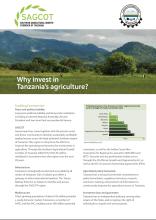Land Library
Welcome to the Land Portal Library. Explore our vast collection of open-access resources (over 74,000) including reports, journal articles, research papers, peer-reviewed publications, legal documents, videos and much more.
/ library resources
Showing items 1 through 9 of 79.The SPR 2015 provides a management record of sector progress over the financial years 2006/07-2014/15, identifying issues arising, as background for an analysis of main challenges for the sector.
The Ministerial Policy Statement is structured by Vote, as follows:
• Staff Establishment Structure Provides details of approved staff structure for each programme and project (including names of staff and vacant posts).
This is clearly demonstrated in the form of an organogram.
Madam Speaker and Honorable Members, the vision of my Ministry is “Sustainable Land Use, Land Tenure Security, Affordable, Decent Housing and Organized Urban Development”.
Madam Speaker and Honorable Members, the vision of my Ministry is “Sustainable Land Use, Land Tenure Security, Affordable, Decent Housing and Organized Urban Development”. The Mission is “To ensure sustainable land management, planned urban and rural development and decent housing for all”.
Government has come together with the private sector and donor community to develop sustainable, profitable agribusinesses across the high-potential Southern region of Tanzania. This region is a key focus for efforts to improve the operating environment for investments in agriculture.
The Southern Agricultural Growth Corridor of Tanzania (“SAGCOT”) has been established as a public private partnership with the objective to enhance Tanzania’s food security and accelerate agricultural transformation.
Tanzania has a long history of sugar cane production and it has now a prioritized national policy to attract foreign investments into modern and industrial scale sugar cane production. Between 2001 and 2010, the production of sugar in Tanzania increased from 130,000 Mt pa to 280,000 Mt pa.
The founding document of SAGCOT, the Investment Blueprint, was developed by the founding partners encompassing government, donor partners, farmers, and the private sector. The SAGCOT Investment Blueprint details the objectives of SAGCOT and how these will be achieved.
This case study is part of a Harvard Kennedy School CSR Initiative workstream on systemic approaches to creating business opportunity and development impact at scale.







